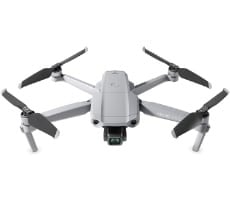Performance Analysis and Final Thoughts
Performance Analysis: The Asus Eee Pad Transformer offered up the best 10 or 7-inch tablet benchmark numbers we've seen to date. Even in our graphics testing, versus Samsung's potent Hummingbird processor in the Galaxy Tab, the Transformer outpaced all competitive offerings by at least a 10% margin. In terms of performance, with a generous 1GB of DDR2 RAM on board, accompanying NVIDIA's potent 1GHz Tegra 2 dual-core processor, you won't find a faster Android tablet on the market right now. Of course, this position for the Transformer may be short-lived with new processors from Qualcomm and Samsung on the horizon as well.
In terms of battery life, again, though we couldn't properly test the Transformer in its keyboard dock, we were very impressed to see the tablet itself last a full 8 hours and 52 minutes. The Transformer's battery life performance lives up to every bit of Asus' specifications for the device it appears.
 We expected a level of polish and refinement with the Asus Eee Pad Transformer tablet. After all, Asus has been on the sidelines baking their Android-based offerings for sometime now. It's actually pretty surprising that the company known to literally have pioneered the netbook, took this long to get an Android tablet offering to market. Regardless, Asus did not disappoint. They may have been on the sidelines for a while but it's obvious Asus was perfecting their Android tablet experience and to be fair, Honeycomb needed to come to fruition first, in order to really do a 10-inch tablet justice. That's not to say that Android 3.0 is perfect, far from it actually. However, what Asus delivered with the Eee Pad Transformer is like night and day, versus previous generation Froyo-based tablets, even those based on basically the same NVIDIA Tegra 2 platform.
We expected a level of polish and refinement with the Asus Eee Pad Transformer tablet. After all, Asus has been on the sidelines baking their Android-based offerings for sometime now. It's actually pretty surprising that the company known to literally have pioneered the netbook, took this long to get an Android tablet offering to market. Regardless, Asus did not disappoint. They may have been on the sidelines for a while but it's obvious Asus was perfecting their Android tablet experience and to be fair, Honeycomb needed to come to fruition first, in order to really do a 10-inch tablet justice. That's not to say that Android 3.0 is perfect, far from it actually. However, what Asus delivered with the Eee Pad Transformer is like night and day, versus previous generation Froyo-based tablets, even those based on basically the same NVIDIA Tegra 2 platform.
So, what could Asus have done better with the Eee Pad Transformer? It's safe to say that we're none too keen about the minor backlight bleed we observed with the Transformer's screen. This seems like something Asus could easily remedy in future designs, or perhaps even in an early update of the device (action item!). We also think a micro-USB port on the tablet itself, rather than just its optional keyboard dock, would offer a bit more flexibility for users. However, these two quibbles are minor, considering the device as whole. The bottom line is the Asus Eee Pad Transformer is easily our favorite 10-inch slate PC that we've seen to date. The tablet's performance and its lightly skinned Honeycomb Android UI, make using the tablet a real pleasure. Also, the wide viewing angles, excellent contrast and color reproduction of its multi-touch IPS LCD are just gorgeous. Asus also bundles just the right assortment of apps with the device as well, and the addition of Polaris Office 3 was a nice touch that doesn't end up feeling like bloatware in the least.
In short, we think the Eee Pad Transformer is about as close to an iPad 2 killer as we're going to get right now in an Android-based product, though it's arguable by some perhaps, that we're still not quite there yet. For its base $399 price, we'd beg to differ though. It's no wonder the Transformer is virtually sold out across the net and in retail right now. Which brings us to one final drawback of the device. Good luck finding it. Asus appears to be catching up to initial release demand and the device is on back-order wherever we looked, except for a few that like to gouge. Keep an eye on more reputable places like NewEgg or B&H or just get in line for a pre-order if you're in the market for one. It's a good problem to have for Asus but they better make hay while they can. The onslaught of tablets will continue for quite some time we're sure. In the meantime, we like the Asus Eee Pad Transformer so much, we felt it more than worthy of our Editor's Choice award.

| |
|
|
|






